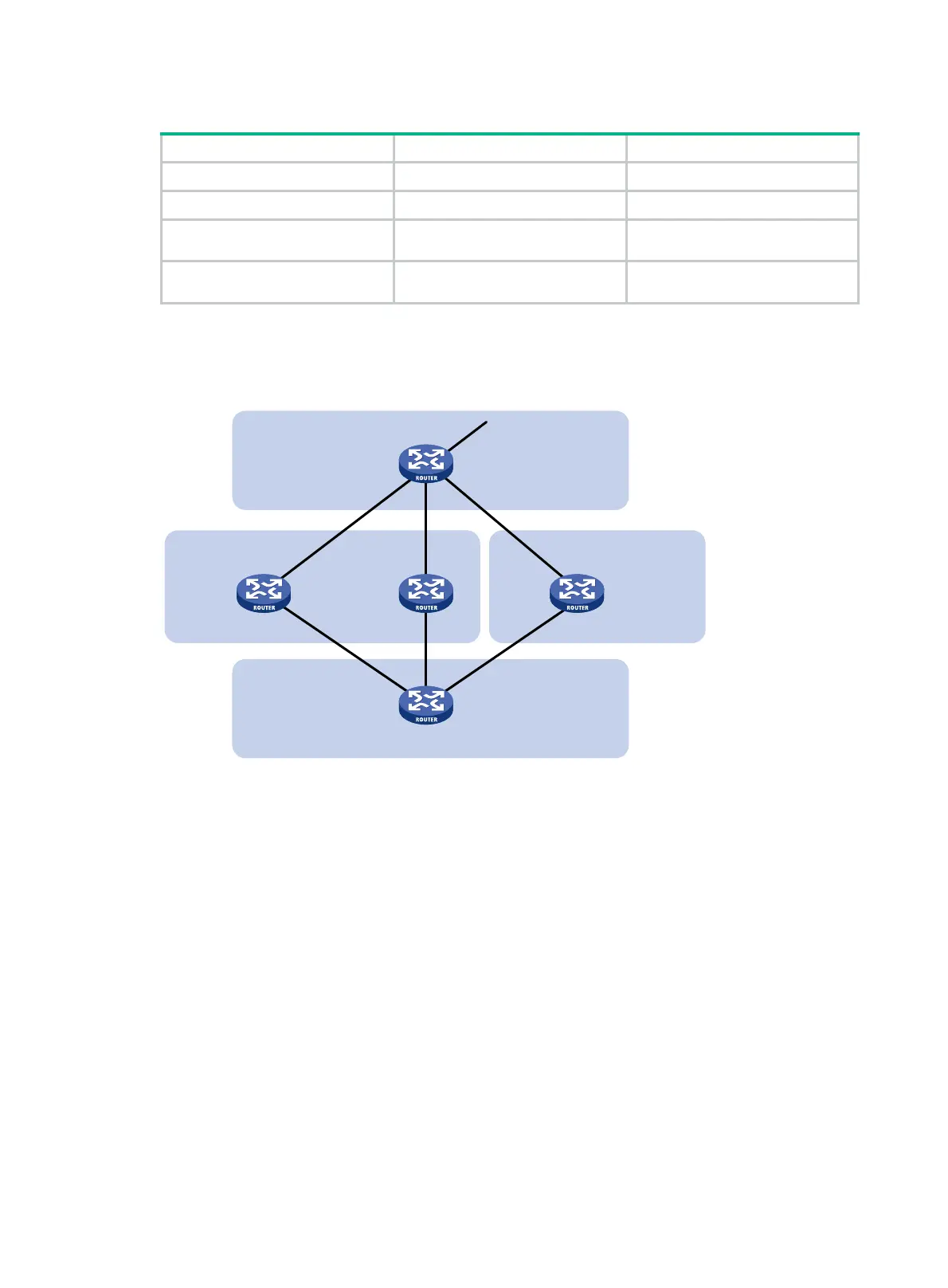219
To enable MED comparison for routes from different ASs (IPv6):
Step Command Remarks
1. Enter system view.
system-view
N/A
2. Enter BGP view.
bgp
as-number
N/A
3. Enter BGP IPv6 unicast
address family view.
address-family ipv6
[
unicast
] N/A
4. Enable MED comparison for
routes from different ASs.
compare-different-as-med
By default, this feature is disabled.
Enabling MED comparison for routes on a per-AS basis
This task enables BGP to compare the MEDs of routes from an AS.
Figure 57 Route selection based on MED (in an IPv4 network)
As shown in Figure 57, Router D learns network 10.0.0.0 from both Router A and Router B. Because
Router B has a smaller router ID, the route learned from Router B is optimal.
Network NextHop MED LocPrf PrefVal Path/Ogn
*>i 10.0.0.0 2.2.2.2 50 0 300e
* i 3.3.3.3 50 0 200e
When Router D learns network 10.0.0.0 from Router C, it compares the route with the optimal route
in its routing table. Because Router C and Router B reside in different ASs, BGP does not compare
the MEDs of the two routes. Router C has a smaller router ID than Router B so the route from Router
C becomes optimal.
Network NextHop MED LocPrf PrefVal Path/Ogn
*>i 10.0.0.0 1.1.1.1 60 0 200e
* i 10.0.0.0 2.2.2.2 50 0 300e
* i 3.3.3.3 50 0 200e
However, Router C and Router A reside in the same AS, and Router C has a greater MED, so
network 10.0.0.0 learned from Router C should not be optimal.
To avoid this problem, you can configure the bestroute compare-med command to enable MED
comparison for routes from the same AS on Router D. After that, Router D puts the routes received
from each AS into a group, selects the route with the lowest MED from each group, and compares
AS 300
AS 100
AS 200
Router A
Router D
Router ID : 3.3.3.3
Router ID : 1.1.1.1
Router C
Eth1/1
1.1.1.1
Eth1/1
3.3.3.3/24
Router B
Router ID : 2.2.2.2
Eth1/1
2.2.2.2/24
AS 400
Router E
10.0.0.0

